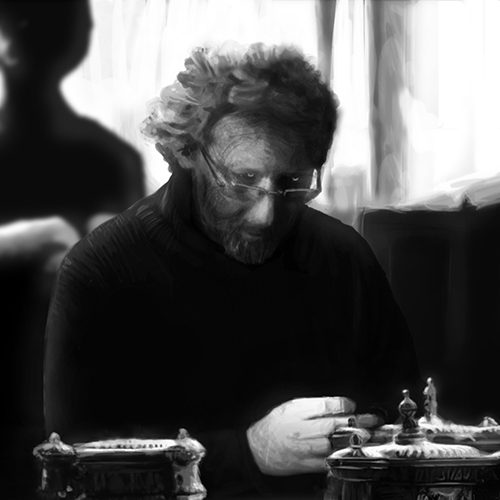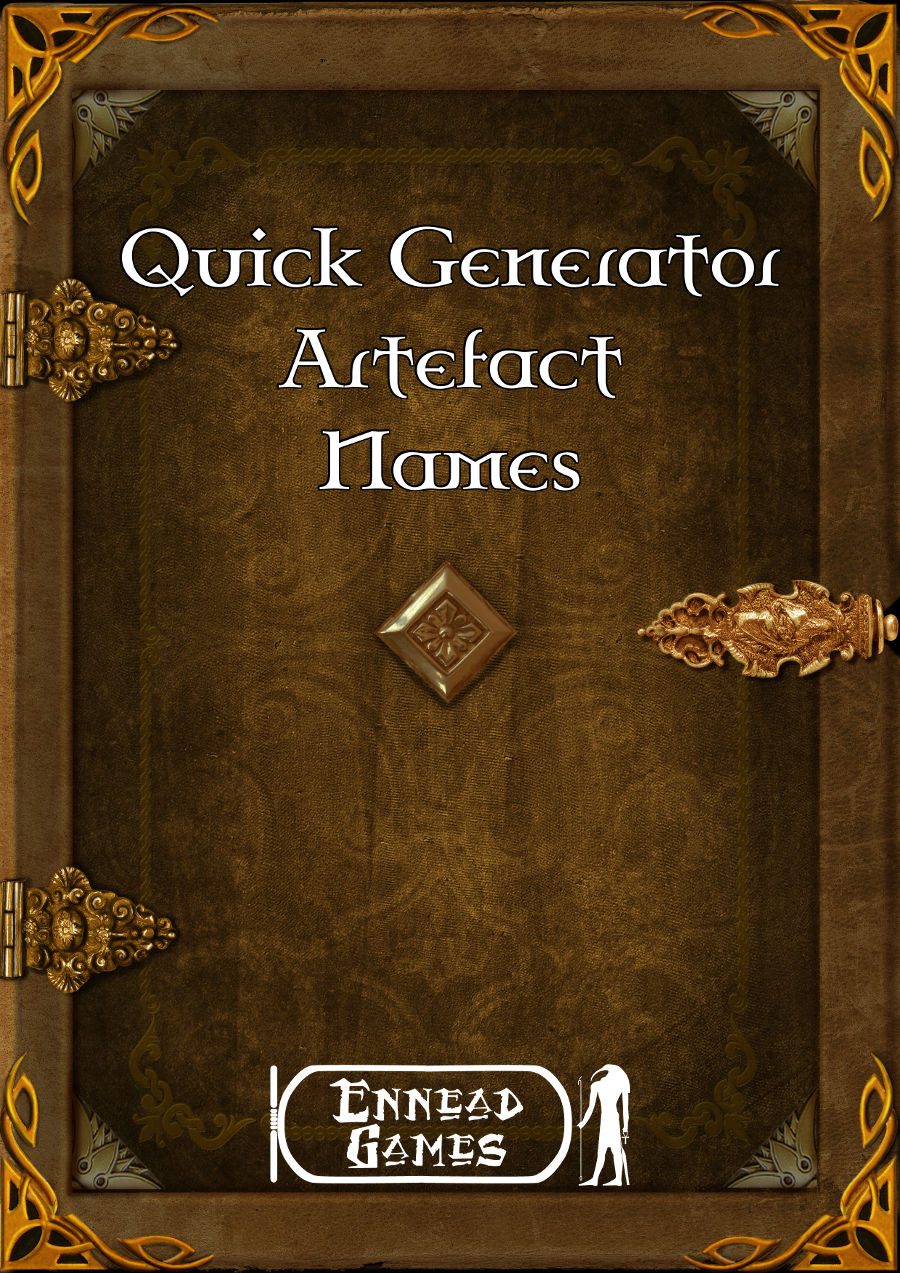
Personal Growth in RPGs Part 2
Phil Nicholls blogs at Tales of a GM, where he writes about narrative gaming, faster prep and more story. He is currently running a HeroQuest Glorantha campaign in a home-brew setting. Phil has written for Johnn Four’s Roleplaying Tips newsletter and has a selection of self-published pdfs.
This essay is taken from the archives at Tales of a GM. http://talesofagm.com/
This article was written as part of my hosting of the January 2016 RPG Blog Carnival. My chosen theme was Gates and Portals, but I broadened out the topic in later essays. This is the second of those essays.
Growth and transitions are embedded within RPG games. One of the core principles of D&D is the idea of “levelling up”, the incremental process of improving the Hero. There are, however, more avenues of personal growth within RPGs than just the accumulation of levels. This essay explores the negative growth which may be inflicted upon Heroes.
Negative growth
Not everything which happens to a Hero during a game is desirable. There are many ways a character can suffer growth in an unwelcome direction. The addition of insanity, made famous in RPGs by Call of Cthulhu, is a clear example of character development dreaded by most Players. Other possibilities include curses, scars and an accumulation of interfering enemies.
Such negative growth is all part of many campaigns. Heroes cannot leave a trail of bodies behind them without slowly acquiring reputations and blood feuds. Indeed, I have known CoC Players who embrace the psychosis of their Investigators as an inevitable part of the setting.
For all their drawbacks, these unwelcome additions to a Hero link the character to previous events in the campaign. They provide a degree of continuity and often drive subsequent quests. I firmly believe the actions of Heroes should have consequences, and these examples of negative growth bring home the impact of previous actions.
Physical Scars at Your Table
There are several ways to bring home the negative consequences of events at your table. Firstly, you should keep track of the major injuries suffered by Players, having each one result in a scar, or other long term effect. Roll on the physical scars table below, or choose something appropriate to the nature of the injury suffered. As with any table, the GM may need to improvise the minor details to fit with the exact circumstances in your game.
d12 Nature of the Scar
1 Long white scar
2 Jagged red scar
3 Scar accross scalp, hair does not grow
4 Scar across the eye, changing, or removing, the pigment in the eye
5 Missing fingertip, no loss of manual dexterity
6 Loss of finger, minor loss of fine manual dexterity
7 Missing tooth
8 Scar down neck, change in pitch of voice
9 Tip of ear lost
10 Scar down leg, walk with a slight limp
11 Broken bone, heals slightly misaligned
12 Joints stiffen in wet weather
Emotional Scars at Your Table
Heroes can suffer emotional scars too. Close encounters with powerful beings, or hideous monsters, may have a lasting emotional impact. Dragons, deities and creatures from beyond the veil force a Hero to face their own mortality, or insignificance. Even if the encounter ended positively for the Hero, it may still leave an emotional scar.
Monitor the impact of events upon the Heroes in your game. After a notable encounter, whether life-threatening or not, hand out one or more of the emotional scars from the table below. Many character-focused Players will savour the emotional depth these quirks give to their Hero.
d12 Emotional Scar
1 Recurring nightmares
2 Bouts of insomnia
3 Fixation on the trigger event, or creature
4 Mild fear of trigger event
5 Need to drown sorrows with beer
6 Unwillingness to be alone
7 Disturbing flashbacks
8 Mild shift in personality
9 Limited ability to laugh
10 Obsession with weapons, to be better prepared “next time”
11 Talks to self about the trigger event
12 Powerful hatred of the trigger event
Please note these emotional and physical scars are intended to have minimal impact on the capabilities of the Hero. Unless you want to reproduce the gradual degradation of Heroes common to games such as Call of Cthulhu, you should keep the mechanical impact of these scars to a minimum. Rather, treat them as additions to the narrative of your games and interesting character quirks.
Social Scars at Your Table
The final type of negative growth is the social one. This is the reaction of society to the actions of the Hero. Authority figures could respond with warrants of arrest, bounties or just issue summons for the Hero to explain themselves in a court of law. Whatever the response of the local government figure, and it need not be wholly negative, there will be some reaction. Rulers are unlikely to simply ignore the presence of an elite group of warriors in their territory. These responses are potentially quite extreme when dealing with “murder hobo” groups.
Alternatively, society as a whole may react to the actions of the Heroes. Reputations, feuds and rivalries can all spring up as a result of an adventure. Once again, these consequences may be positive or negative. However, they will be primarily beyond the direct control of the Players, and could have a considerable effect on the story moving forward.
The social scars table below presents another batch of 12 outcomes. These are split evenly between the reactions of authority figures, and those of broader society. Most are the negative consequences of unwise actions, but I have included a couple of positive outcomes too. Choose, or amend, according to the events in your campaign.
d12 Social Scar
1 Arrest warrant
2 Taxation writ, on all the accumulated, or assumed, gold
3 Bounty for capture
4 Summons for an “interview”
5 Offer of employment, which ought not be refused
6 Target of official spies
7 Blood feud declared by a family
8 Bloodthirsty reputation, scares children and many gentlefolk
9 Rival warrior seeks a duel
10 Spurious legal claim issued, grasping for a share of the Hero’s wealth
11 Unwanted marriage proposal
12 Mantle of folk hero, bringing with it all manner of social and political baggage
Conclusion
While scars are not always desirable for the Player, they reinforce previous events. A heavily scarred Hero, with a burden of physical, mental and social scars, is closely linked to campaign events.
How would you use scars in your campaign? What emotional scars work best for your Players? Share your thoughts in the comments below.
Happy Gaming
Phil
For more essays from Phil, and updates about his latest campaign, visit Tales of a GM.
Get a compiled pdf of Tales of the GM best articles of 2016 here




One thought on “[Tales of a GM] – Personal Growth in RPGs Part 2”
Comments are closed.